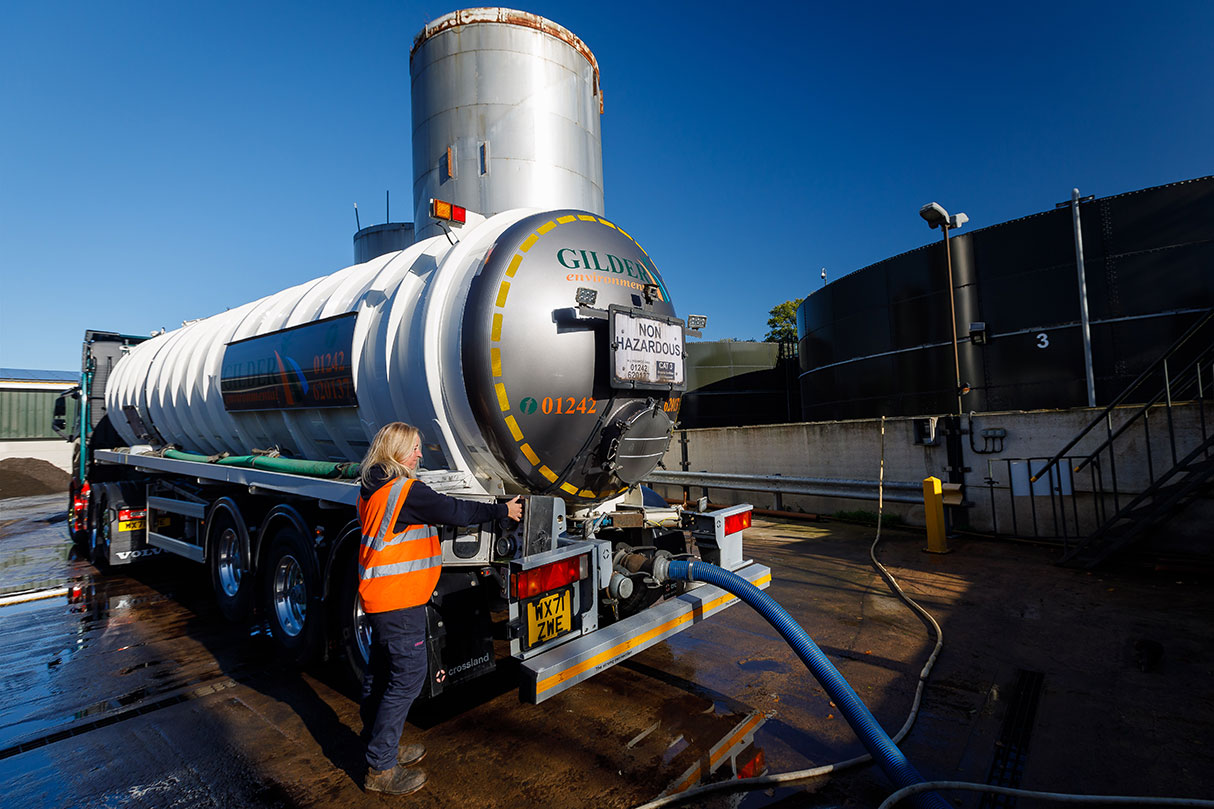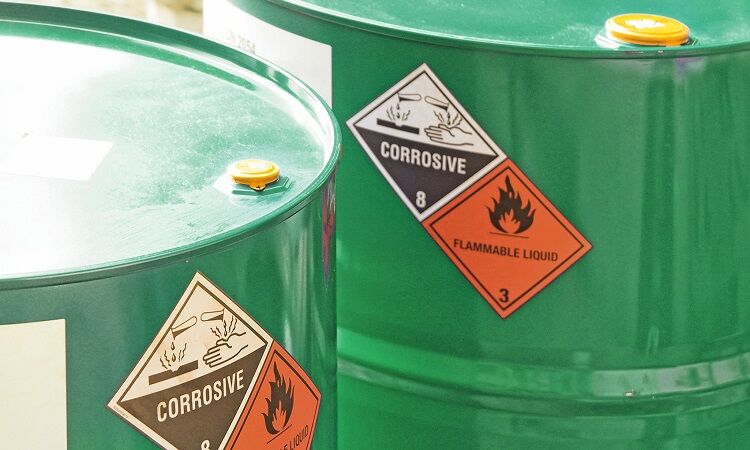Ingenious Industrial Wastewater Treatment Solutions: Securing the Atmosphere
Ingenious Industrial Wastewater Treatment Solutions: Securing the Atmosphere
Blog Article
Just How Liquid Waste Disposal Works: A Comprehensive Summary of Methods and Technologies Utilized

Review of Fluid Waste Types
The complexity of fluid waste types demands a thorough understanding of their characteristics and implications for disposal. Liquid waste can broadly be categorized into several types, including industrial, municipal, agricultural, and contaminated materials. Each classification shows unique residential or commercial properties, needing details monitoring techniques to minimize ecological and health dangers.
Industrial fluid waste originates from manufacturing processes and frequently contains a series of contaminants, such as hefty steels, solvents, and organic compounds. Municipal liquid waste, mainly consisting of wastewater from households and commercial establishments, contains raw material, nutrients, and virus (industrial wastewater treatment). Agricultural liquid waste, including drainage from farms, might consist of fertilizers, chemicals, and pet waste, positioning threats to water high quality and environments
Dangerous fluid waste is defined by its poisoning, reactivity, or potential to trigger harm. This group consists of substances like acids, bases, and particular chemicals that require rigorous handling and disposal procedures. Understanding these varied liquid waste kinds is important for developing efficient disposal approaches and ensuring compliance with ecological policies. Correct classification and characterization are crucial for executing ideal treatment strategies and minimizing the negative effect on public health and wellness and the environment.
Physical Treatment Methods

Testing is the preliminary action, where bigger bits and debris are gotten rid of from the fluid waste using screens or grates. In sedimentation storage tanks, much heavier bits settle at the base, forming a sludge layer, while the made clear fluid can be further treated.
Filtration is one more necessary method that involves passing the fluid with permeable materials, such as sand or membrane layers, to record smaller sized bits. This action improves the high quality of the liquid, making it suitable for succeeding therapy processes.

Chemical Therapy Methods
Chemical treatment strategies are vital for effectively managing fluid waste, especially in attending to dissolved and colloidal pollutants that physical approaches might not adequately remove. These techniques use numerous chemical agents to neutralize, speed up, or change harmful compounds right into less hazardous forms.
One common approach is coagulation and flocculation, where chemicals such as alum or ferric chloride are contributed to advertise the gathering of suspended fragments. This procedure boosts sedimentation, allowing for much easier removal of the resulting sludge. Additionally, oxidation procedures, using agents like chlorine or ozone, are employed to damage down complicated natural substances and virus, providing the waste safer for discharge or further therapy.
Neutralization is another essential technique, which adjusts the pH of acidic or alkaline waste streams to neutral degrees, avoiding prospective harm to downstream systems and the setting. Additionally, progressed oxidation processes (AOPs) make use of combinations of oxidants and ultraviolet light to degrade relentless contaminants, achieving a greater level of treatment effectiveness.
Organic Treatment Procedures
Organic therapy procedures play an important role in the management of fluid waste by using microbes to disintegrate raw material and minimize contaminant degrees. These procedures can be generally categorized into anaerobic and cardiovascular therapies, each employing specific microbial neighborhoods to achieve efficient waste deterioration.
Aerobic therapy involves the use of oxygen to assist in the failure of natural products by bacteria. This process is frequently carried out in activated sludge systems, where aeration tanks provide a conducive environment for microbial development, bring about the oxidation of natural pollutants. The resultant biomass can be divided from treated effluent through sedimentation.
On the other hand, anaerobic treatment occurs in the absence of oxygen, relying upon different microorganisms to break down raw material. This approach is particularly beneficial for high-strength waste, as it generates biogas, a renewable resource source, while reducing sludge manufacturing. Technologies such as anaerobic digesters are regularly used in municipal and commercial applications.
Both cardio and anaerobic biological treatments not only lessen the ecological effect of fluid waste but also facilitate source healing, making them crucial parts of sustainable waste monitoring strategies. Their flexibility, effectiveness, and effectiveness support their widespread implementation across different sectors.
Arising Technologies in Disposal
Cutting-edge approaches to liquid garbage disposal are quickly progressing, driven by innovations in modern technology and an enhancing focus on sustainability. Among these arising technologies, membrane bioreactors (MBRs) have obtained grip for their ability to incorporate organic therapy with membrane purification, causing top quality effluent that can be reused in different applications. MBRs enable smaller sized impacts and a lot more effective operations compared to typical systems.
One more encouraging growth is using anaerobic food digestion incorporated with nutrient recuperation technologies, which not just deals with fluid waste however likewise generates biogas and recuperates useful nutrients like you could check here nitrogen and phosphorus. This twin advantage enhances resource effectiveness and lowers ecological impact.
In addition, advanced oxidation procedures (AOPs) are being embraced for the destruction of complex natural contaminants. These techniques use powerful oxidants and stimulants to damage down impurities at the molecular degree, supplying a highly efficient solution for difficult waste streams.
Moreover, the integration of man-made intelligence and maker learning in waste management systems is enhancing operational performance and anticipating maintenance, resulting in lowered prices and improved ecological conformity. These innovations show a substantial shift in the direction of more sustainable and effective fluid waste disposal methods.
Conclusion
In final thought, efficient liquid garbage disposal demands a comprehensive understanding of different strategies and innovations. The combination of physical, chemical, and organic treatment techniques makes certain the effective monitoring of varied look at here waste types. Furthermore, the introduction of innovative modern technologies improves therapy effectiveness and advertises sustainability in waste management methods. By continually progressing these techniques, it comes to be possible to attend to the expanding obstacles connected with fluid waste, ultimately adding to environmental defense and source recovery.
Fluid waste disposal is a crucial facet of ecological monitoring, needing a thorough understanding of different methods and modern technologies customized to different waste types. Liquid waste can broadly be categorized right into numerous types, including industrial, metropolitan, farming, and hazardous waste. Agricultural fluid waste, including overflow from ranches, may consist of fertilizers, pesticides, and pet waste, posing threats to water top quality and communities.
Numerous physical therapy techniques play a crucial duty in taking care of liquid waste effectively look at here - industrial wastewater treatment.In conclusion, efficient liquid waste disposal demands an extensive understanding of various strategies and innovations
Report this page